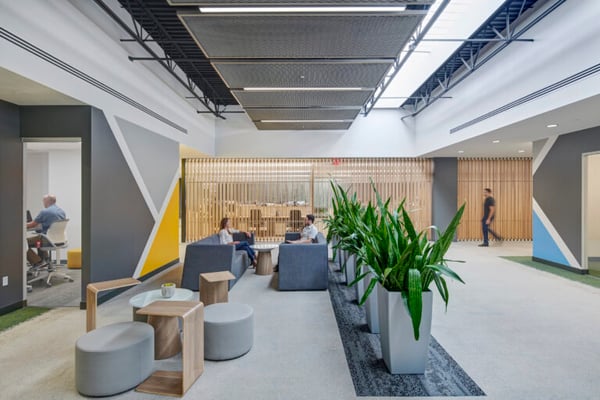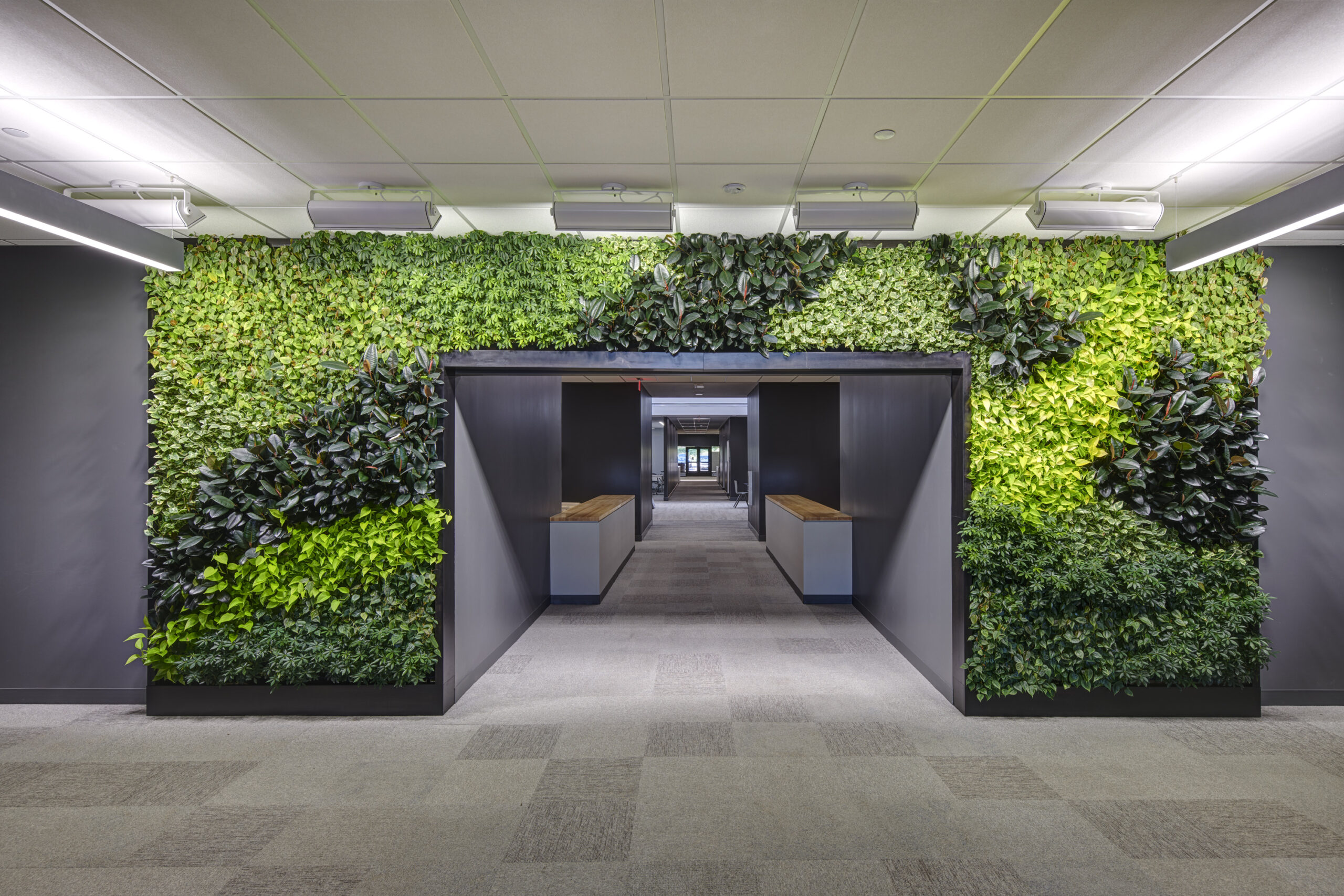On average, people spend 90% of their time indoors. While interior spaces are necessary for most daily activities, they often cut off our access to nature. Thankfully, designers can bring the outdoors inside.
“Biophilia” is a psychological theory that refers to our innate connection to nature. It shows that spending time in nature is key to mental and physical health.
“Biophilic design” puts this theory into practice by attempting to cultivate our connection with nature in the built environment. When you start a building project, you may hear your architect or interior designer refer to biophilic design, especially if you utilize a building verification system like WELL or Living Building Challenge (LBC).
This article will discuss three strategies for incorporating biophilic design into your space:
- Increase daylight
- Provide visual connections to nature
- Utilize natural materials
Reading about these strategies will help you better understand biophilic design and how it can help you improve occupant wellbeing.
What is Biophilia?
“Biophilia” stems from the Greek words for “life” (bio) and “love” (philia). It was first coined by psychologist Eric Fromm in 1964. Since its introduction, the theory has made its way into many fields, including architecture and interior design.
Researchers find that spending time in and around nature provides many health benefits, including reduced stress, increased energy levels, and improved cognitive function. Anyone who has taken a walk through the park after a long workday can vouch for nature’s restorative power.
Due to these benefits, designers have developed several strategies for increasing access to nature within the built environment. Building verification systems like WELL and the LBC often require biophilic design elements, making these strategies increasingly common.
3 Biophilic Design Strategies
1. Increase Daylighting
Daylighting strategies are foundational to biophilic design. Daylight plays a central role in boosting energy levels, improving mood, and regulating circadian rhythms. Paying attention to solar orientation, window style, and glazing can help architects seamlessly integrate natural light into a space.
Renovating an existing building can challenge conventional daylighting strategies. Large buildings with deep footprints provide unequal access to natural light, leading many occupants to spend their time under harsh fluorescents.
Some interior design strategies can help mitigate these challenges. For example, during the Pearson renovation, the design team removed walls and other physical barriers to allow daylight to travel deeper into the building. Adding skylights in windowless areas further increased natural light levels.
These strategies can help cultivate a connection to nature even in less-than-ideal settings.

Skylights at Pearsons’ headquarters.
2. Provide Visual Connections to Nature
Visual connections to nature are another important element of biophilic design. Research shows that views of nature can reduce stress, lower blood pressure, and reduce feelings of anger and aggression.
Some studies even show that hospital patients recover faster in rooms with windows.
Visual connections to nature are central to the design of the Unitarian Universalist facility. The design team describes the building as a “tent on the savanna.” Curved glass panes provide uninterrupted views of the surrounding woodland, while its low entrance creates a feeling of refuge.
However, this project benefits from a rural site. Creating visual connections to nature is more difficult in dense, urban settings.
If natural views are unavailable, designers can bring nature indoors. Interior foliage, moss gardens, and courtyards can cultivate similar benefits when natural views are limited.
The design team used these strategies at Pearson’s headquarters. Potted plants and living wall planters help stimulate a connection to nature within an office setting.

Views of the landscape at Unitarian Universalist.
3. Utilize Natural Materials
Materials can also help create a connection to nature. Natural materials like wood and stone are often healthier and more sustainable than synthetic options. They also provide the added benefit of subtly reminding occupants of nature.
While these materials may have a higher initial cost than other options, they are often more durable and have lower maintenance costs. Their timelessness can also save you from future renovations.
When selecting products, designers should prioritize local production. Sourcing locally can help create a distinct sense of place, while also reducing embodied carbon emissions associated with shipping. These strategies are utilized at the Stanley Center for Peace and Security, which is on track to be the first fully certified Living Building in Iowa.
Learn More About Biophilic Design
Spending time in nature is foundational to our mental and physical health. Although we spend most of our time indoors, biophilic design strategies can help improve our wellness.
No matter your project, your design team can help you increase daylight, create visual connections to nature, and incorporate natural materials.
As mentioned, biophilic design is often required for building verification systems like WELL and LBC. Read our guide to these systems to learn which best aligns with your project.
